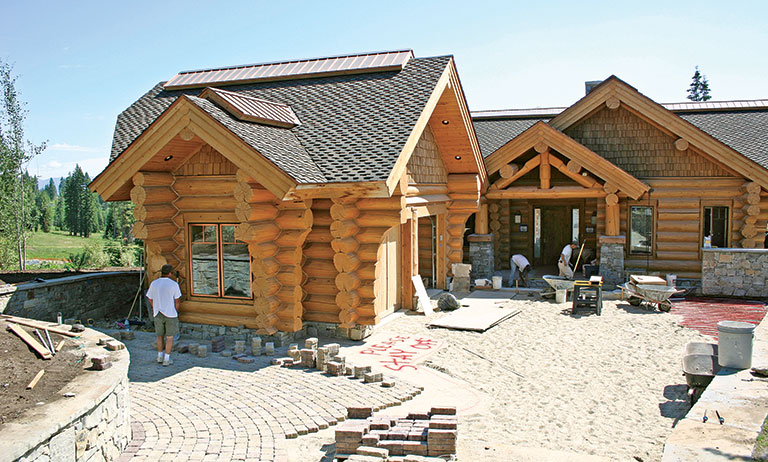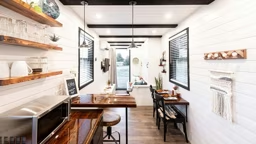It looks so easy on TV, doesn’t it? The before footage shows a raw space and 20 minutes later, the after shots reveal a beautiful new floor, kitchen, bath or deck. In the real world, cabin projects seldom go so smoothly. To DIY or not to DIY? That’s the question, and log home experts offer some advice:
On log stacking
You may have loved Lincoln Logs as a kid, but stacking your cabin’s log walls is a far bigger job. However, it can be tackled by homeowners, says Ronald Myer of Conestoga Log Cabins & Homes in Pennsylvania, by buying a log package that includes pre-cut and pre-notched manufactured logs. “Otherwise the homeowner will have to deal with logs warping, random length logs, butt joining, drilling for electric, etc.”
While the job can be done without professionals, stacking walls isn’t a one-person job. You’ll need committed family, friends or hired help on hand for the duration. Ask the kit supplier plenty of questions before you purchase about how the materials are delivered, what kit instructions are available and the availability of customer support.
Pace yourself, says DeWayne Crumley of Serenity Log Homes, an independent dealer for Honest Abe Log Homes in Tennessee. “Remember that you eat a watermelon one bite at a time, and the same with building – one log at a time or one step at a time,” he says.
On saving money
Before you strap on a tool belt, consider why you want to DIY. If trimming the budget is at the top of the list, heed this advice from Jim Cooper, author of the book “Log Homes Made Easy.” He states, “If the sole reason you are tackling the project yourself is to save money, you are almost certain to pay more and be less satisfied than you would be hiring pros.” Why squander the limited time you have at the cabin chained to a project you don’t enjoy?
“You’re likely to take longer, waste more materials through mistakes and make yourself miserable in the process,” Cooper warns. You can cut costs, he explains, if you have the time and desire to see projects through. “Projects that drag on because your time is limited can wind up costing more than hiring pros, especially if you are borrowing money.”
On sweat equity
If you’d like to invest elbow grease into your cabin, Crumley suggests staining or painting interior trim, assembling ceiling fans or light fixtures, installing electrical switch and outlet plates, puttying nail holes on trim, landscaping or taking on the final cleaning of your new cabin instead of hiring those jobs out. “You can do this as a family project or invite friends over for a tour and make a party of it,” he says. “In our area, that will save you at least $750, usually more.”
On being prepared
Do your homework before you work on your home. Both Myer and Cooper encourage DIYers to look for informational videos online and resources on log producers’ web sites.
Another way to learn is through workshops hosted by log home companies or home improvement stores. “Attending a seminar or watching videos helps you gauge your abilities and shows you what tools and materials you’ll need,” Cooper says. These demos can also help you estimate the time required for a certain project. But, keep in mind that the pros work more efficiently than rookie homeowners.











